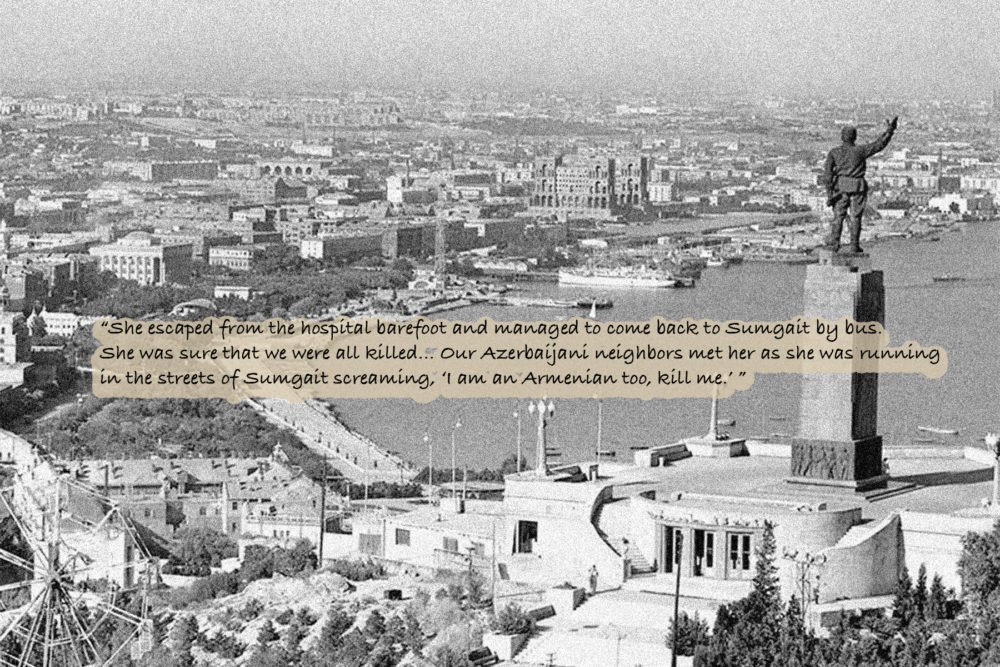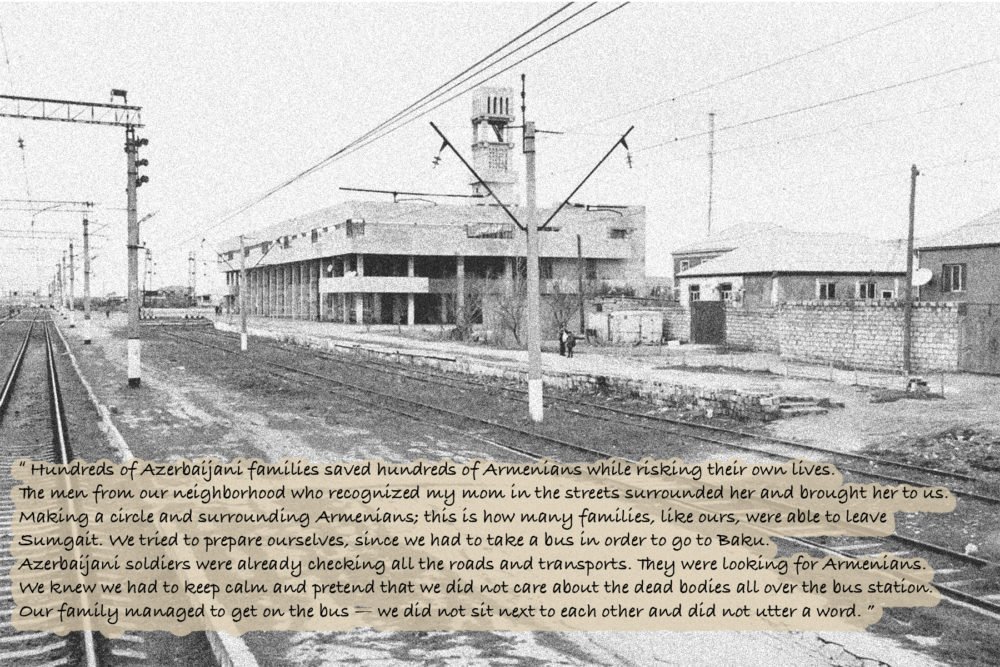
In the beginning of September 2022, I was filming in Shaqi village, Syunik, when Gayane approached me. She noticed my camera and offered to tell her story. The taxi was already waiting to take me back to Yerevan. I promised her that one day I would go back to meet her again, and I did.
Gayane recalled memories from her childhood; they lived in Sumgait, she was 12 when the pogroms started. From February 27 to March 1, 1988, ethnic Armenians in the seaside town of Sumgait, Azerbaijan, were attacked and killed. At least 32 people died.
The birthday
“It was February 28th, 1988. We were at home, my dad, my siblings, and I. It was my youngest brother’s birthday; we were looking forward to our mom coming home to have a celebration in the evening. She was in Baku that day at the hospital [having a medical check]. We heard screams coming from outside, getting louder. My eldest sister was worried, yet my father kept telling us ‘It is just the boys playing football outside’. I looked through the window. There were around 60-70 people yelling ‘Urah’ and getting closer to our neighborhood. Immediately we ran to our neighbor’s place; they were Azerbaijanis. They hid us under the beds and the tables. We kept hearing noises coming from our home; It was destroyed completely.”
Gayane’s mother
Gayane’s mother heard the news about Sumgait while at a hospital in Baku. At that time the situation in Baku was very different — the city was calmer and safer. “She escaped from the hospital barefoot and managed to come back to Sumgait by bus. She was sure that we were all killed… Our Azerbaijani neighbors met her as she was running in the streets of Sumgait screaming, ‘I am an Armenian too, kill me.’”
The escape
“Hundreds of Azerbaijani families saved hundreds of Armenians while risking their own lives. The men from our neighborhood who recognized my mom in the streets surrounded her and brought her to us. Making a circle and surrounding Armenians; this is how many families, like ours, were able to leave Sumgait. We tried to prepare ourselves since we had to take a bus in order to go to Baku. Azerbaijani soldiers were already checking all the roads and transports. They were looking for Armenians. We knew we had to keep calm and pretend that we did not care about the dead bodies all over the bus station. Our family managed to get on the bus — we did not sit next to each other and did not utter a word”
The story of walnut
“Azerbaijanis used to pronounce walnut as ‘fndgh,’ whereas Armenians would call it ‘pndgh.’ We were on the bus when the soldiers stopped us. One of them entered with a walnut in his palm. He approached everyone and asked them to pronounce ‘walnut.’ My mom was a smart woman and she had warned us about this trick beforehand. We all passed the “test” and they let our bus continue on its way to Baku.”
Baku
“We spent two nights in Baku while my parents figured out how to obtain the tickets which would help us migrate to Russia by train. We left for Krasnodar; only then could we finally process what we had experienced. I remember the fear at the bus station. I remember that I was not allowed to make any noise or any facial expression.”
“[in Krasnodar] I used to miss my home, my classmates, and my friends. Through the years everything faded away. After a year of living in Krasnodar we moved to Armenia, to the village Shaqi in the Syunik region. Since then this place has become my home.”
What now?
“I am not able to feel any sort of fear anymore. The things I have seen as a 12 year old girl, the stress that I experienced back in those days… This September when the firing started just a few kilometers away from Shaqi, on the borderline between Armenia and Azerbaijan, I just went to sleep. My friends and my neighbors were stressed, some were even planning to leave the village. I am not going to escape again; I have done it once already. I do not feel fear. We may still live together with Azerbaijanis again. I’m fine with that, but I am not sure if it is going to be easy.”





